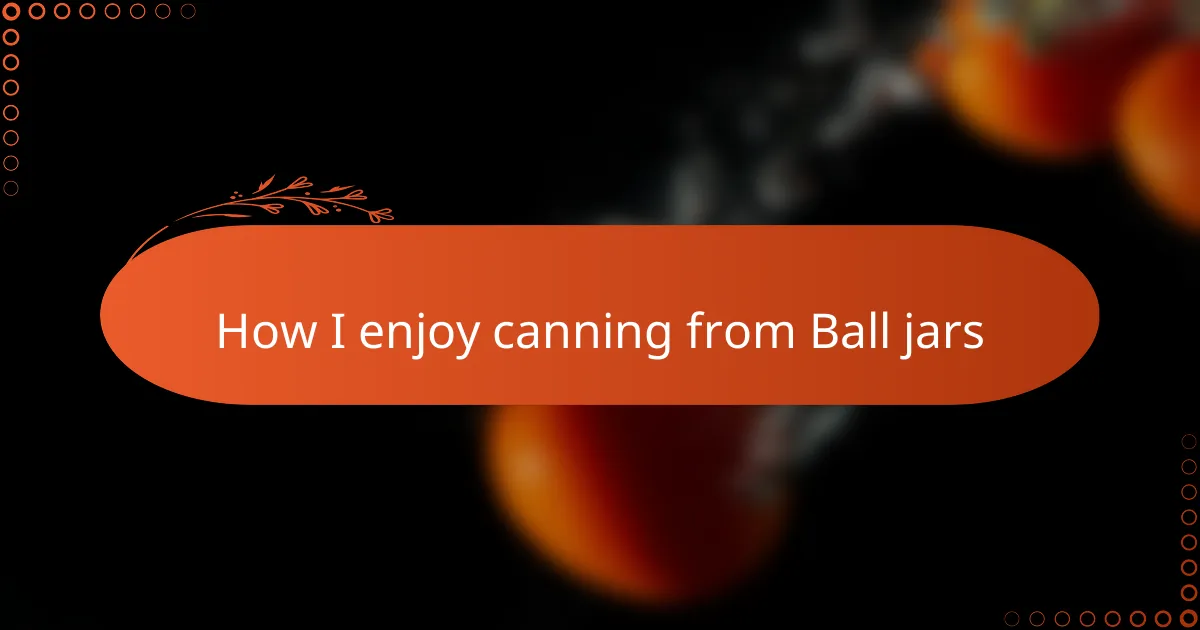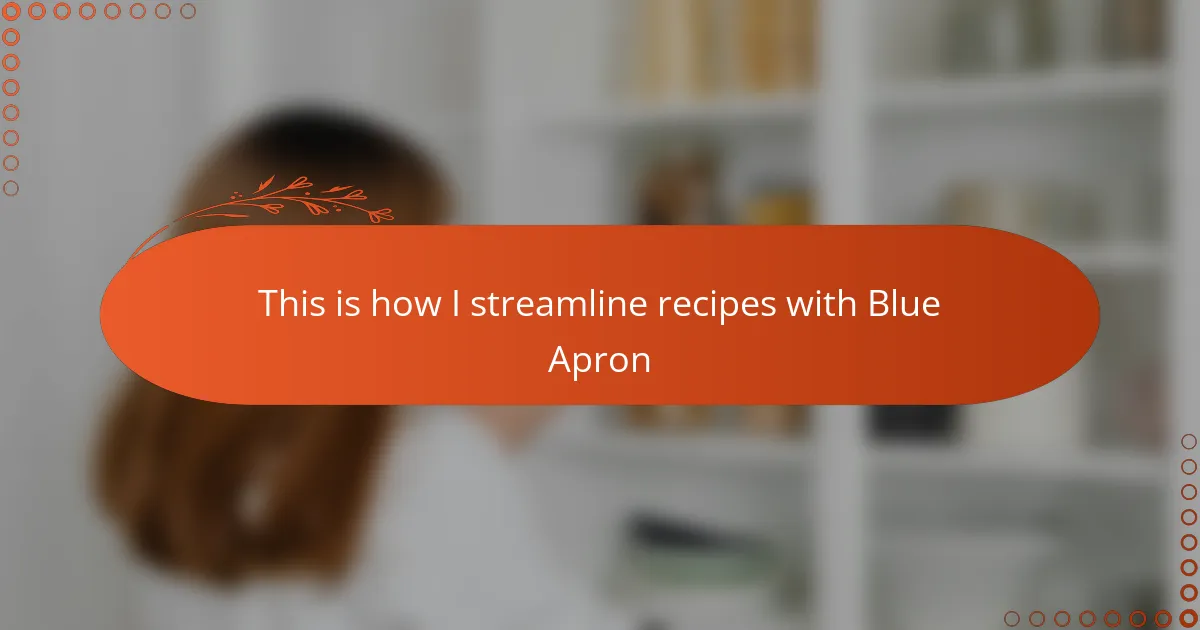Key takeaways
- Homesteading cooking emphasizes simple, natural ingredients, fostering mindfulness and a deeper appreciation for the cooking process.
- Baking bread involves mastering basic ingredients and techniques, with attention to detail crucial for achieving the desired texture and flavor.
- Using high-quality tools like All-Clad cookware improves baking outcomes, providing even heat and making the process more enjoyable and less stressful.
- Preparation and patience in baking, such as proper ingredient measurements and allowing dough to rise, are essential for successful bread-making results.
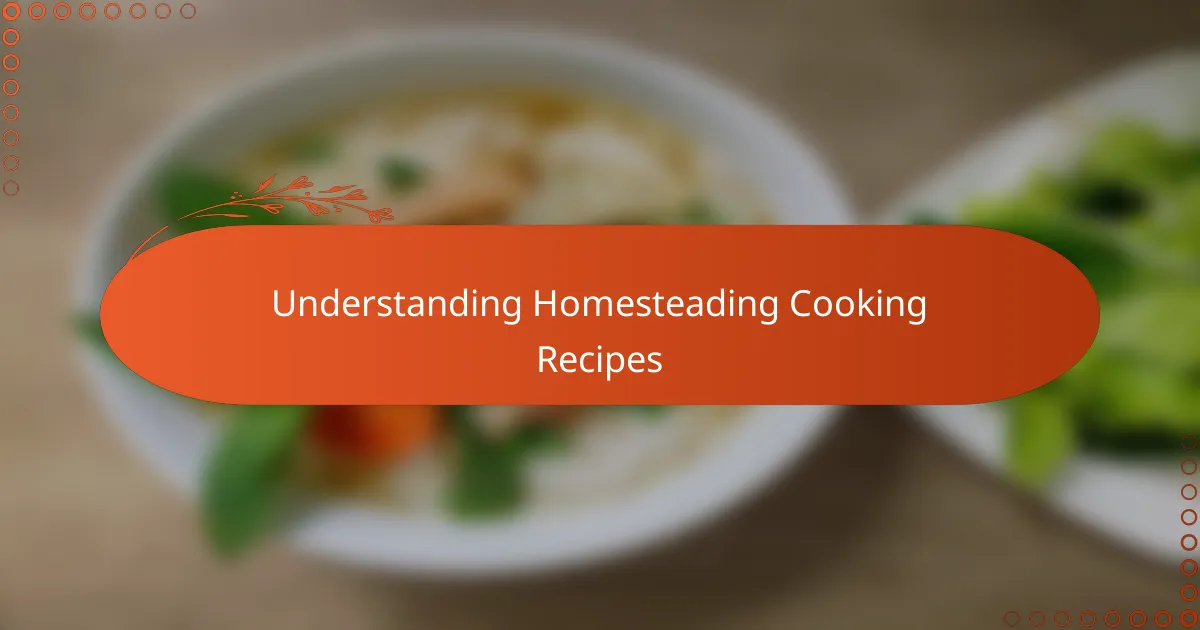
Understanding Homesteading Cooking Recipes
Homesteading cooking recipes are more than just instructions; they’re a link to tradition and self-reliance. When I first started, I realized these recipes often focus on simple, natural ingredients that reflect the seasons and the land around us. Have you ever noticed how these recipes encourage you to slow down and appreciate the process, not just the outcome?
What I find most rewarding is how homesteading recipes often turn everyday cooking into a form of mindfulness and care. There’s an emotional connection here—cooking with intentions, using what you’ve grown or sourced locally, makes the food taste richer, at least to me. It makes you appreciate the journey of each ingredient from soil to table.
And let’s not forget, these recipes can be surprisingly practical. They lean heavily on basics and traditional techniques, which for me means fewer worries about fancy gadgets or mysterious ingredients. It’s like coming home to cooking that’s approachable, sustainable, and deeply satisfying. Have you thought about how returning to these roots changes the way you relate to your kitchen?
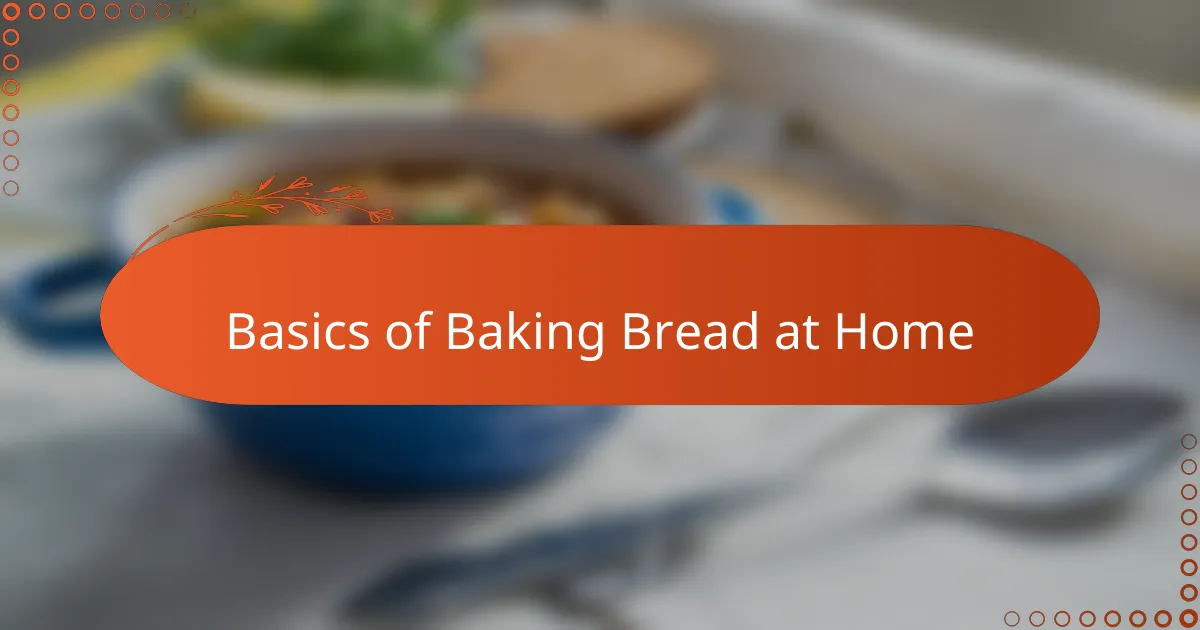
Basics of Baking Bread at Home
Baking bread at home starts with mastering a few simple ingredients—flour, water, yeast, and salt. From my experience, understanding how these basics interact is key; for instance, I learned early on that water temperature can make or break yeast activation, which affects the whole rise.
Have you ever noticed how kneading dough feels almost therapeutic? I find it calming, like a little moment of connection between me and the bread. It’s more than just mixing ingredients; it’s about building structure and developing gluten, which gives bread its chewy texture.
Timing is another piece of the puzzle. Patience is tough, especially when the smell of baking bread makes your kitchen feel like heaven. But waiting for the dough to rise properly has always rewarded me with a loaf that’s fluffy inside and crusty outside—something that’s worth every minute of anticipation.
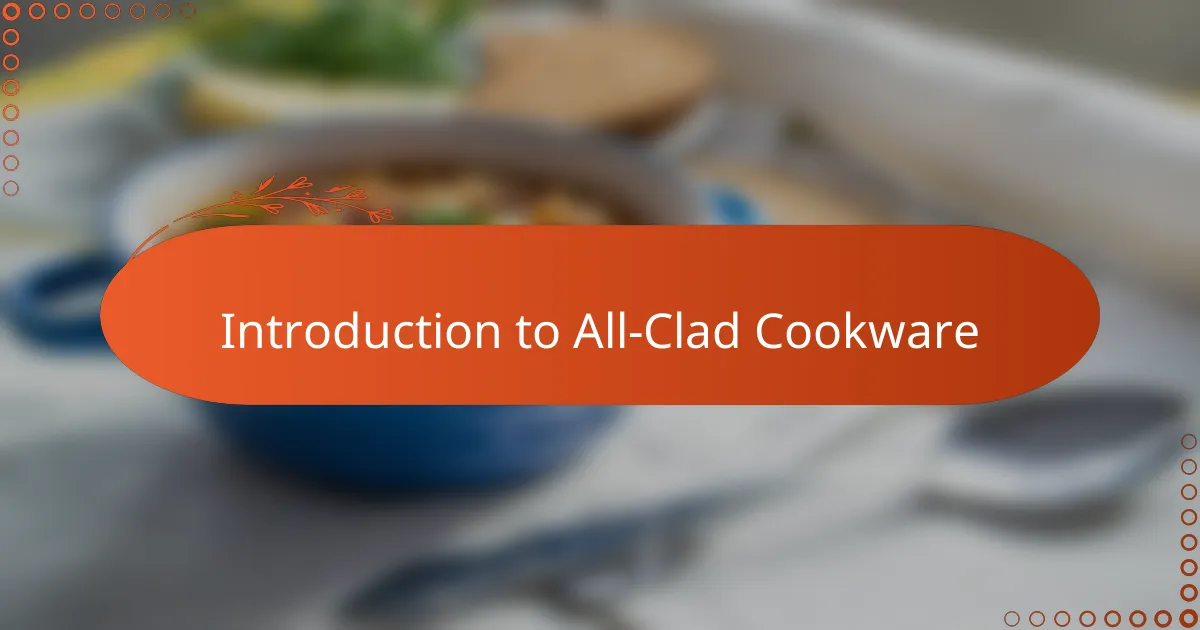
Introduction to All-Clad Cookware
All-Clad cookware has been a game-changer in my kitchen, especially when it comes to baking bread. What I appreciate most is its exceptional heat conductivity, which means every inch of my bread gets that perfect, even bake. Have you ever struggled with hot spots in your pans that leave some parts undercooked? That’s something I rarely worry about with All-Clad.
The build quality is another aspect that really stands out to me. These pans feel sturdy and well-balanced in my hands, making the whole baking process more enjoyable and less fussy. It’s like the cookware is doing part of the work, allowing me to focus more on the art of bread making.
Using All-Clad has made me rethink the value of investing in good tools for homesteading cooking. Sure, you can bake bread in basic pans, but having that consistent temperature and solid construction elevates the whole experience. Doesn’t it feel good when your tools just work?
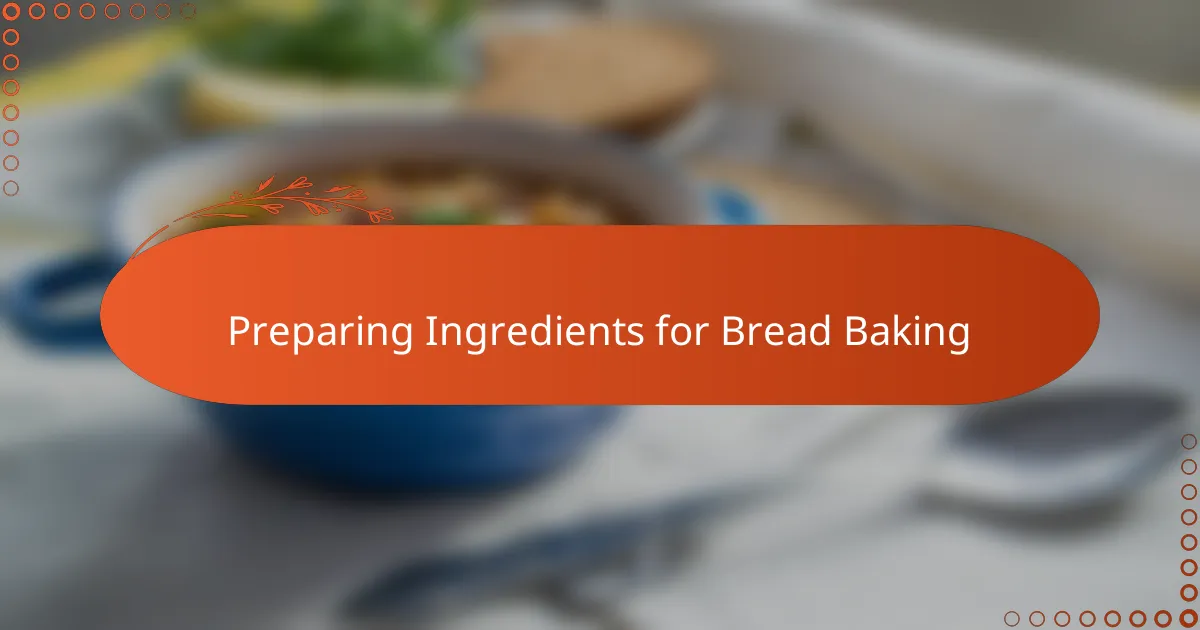
Preparing Ingredients for Bread Baking
When I prepare ingredients for baking bread, I always start by measuring everything carefully. Too often, I’ve seen recipes falter because someone underestimated the importance of the right flour-to-water ratio. Have you ever guessed the amounts and ended up with dough that’s too sticky or dry? That little detail really shapes the entire loaf.
I like to use bread flour because its higher protein content builds a stronger gluten network. Over time, I noticed that switching to bread flour improved my bread’s texture significantly. Salt and yeast are just as crucial; salt controls yeast activity while enhancing flavor, so I make sure not to skip or skimp on it.
Water temperature is something I pay close attention to—it has to be just right to wake the yeast up without killing it. I remember the first few times I rushed this step and ended up with flat dough; it taught me to be patient and precise. Isn’t it funny how something as simple as water heat can make such a difference?
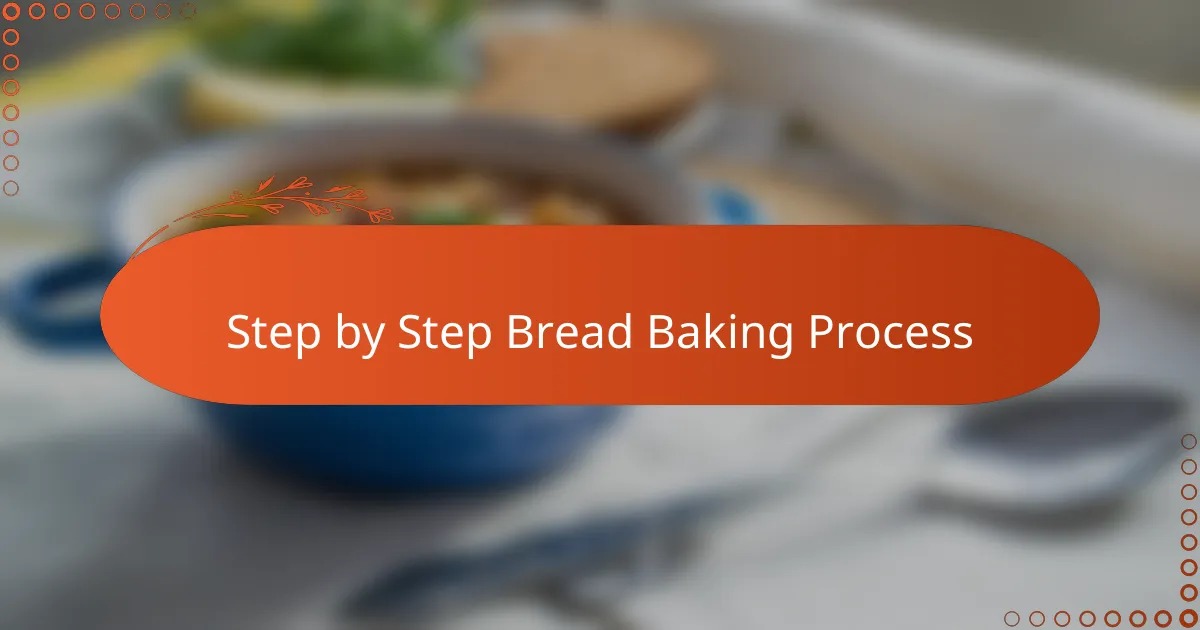
Step by Step Bread Baking Process
The first step I take is mixing the flour, water, yeast, and salt until the dough just comes together. There’s something oddly satisfying about this messy beginning—it always reminds me that every perfect loaf starts with a humble, sticky ball. Do you ever find yourself watching the mix like it’s some kind of magic happening?
Once mixed, I move on to kneading, which really builds the dough’s structure. I’ve found that about 10 minutes of firm kneading brings the dough to life, stretching the gluten until it’s silky and elastic. It’s a bit like giving the dough a gentle workout—tiring but necessary, and honestly, quite meditative.
The proofing stage is where patience really comes into play. I let the dough rest in a warm spot, covered, until it doubles in size, which usually takes about an hour or so. Waiting here feels like a slow reveal, doesn’t it? But I promise, that soft, risen dough is the reward that makes the whole process worth it.
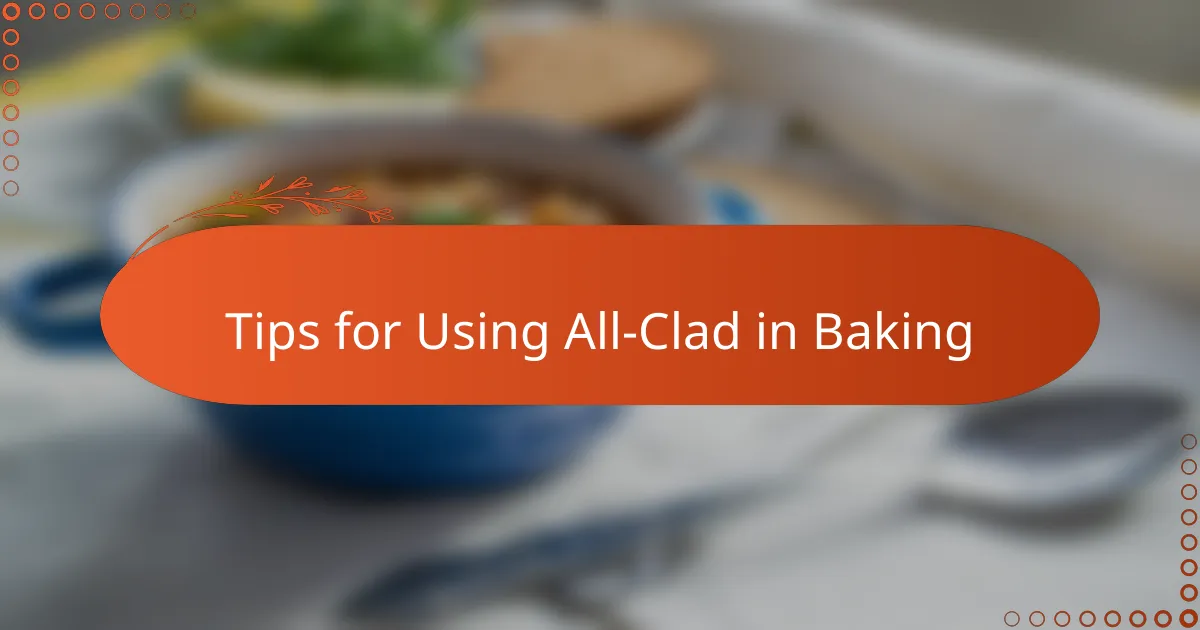
Tips for Using All-Clad in Baking
When I started baking bread with All-Clad, one tip that quickly stood out is to preheat the pan thoroughly. I learned the hard way that a cold pan can lead to uneven crust development. Have you ever pulled out a loaf that looks perfect on top but feels soggy underneath? Preheating solved that problem for me, giving my bread that satisfying crunch all around.
Another thing I’ve noticed is the importance of using the right All-Clad piece. My go-to is the stainless steel skillet because it holds heat so evenly, which helps the bread bake consistently without burning the edges. Plus, its weight adds a certain confidence when handling sticky dough—don’t you hate when your pan feels flimsy during those crucial moments?
Lastly, cleaning All-Clad after baking has been surprisingly easy, which I appreciate more than I expected. I once left dough bits stuck on, thinking it’d be a nightmare to scrub off, but a quick soak and gentle wipe did the trick. If you treat your pans well, they return the favor with many perfect bakes, making every loaf feel like a small victory. Have you found that ease of cleanup changes how often you bake? For me, it definitely encourages more frequent baking sessions.
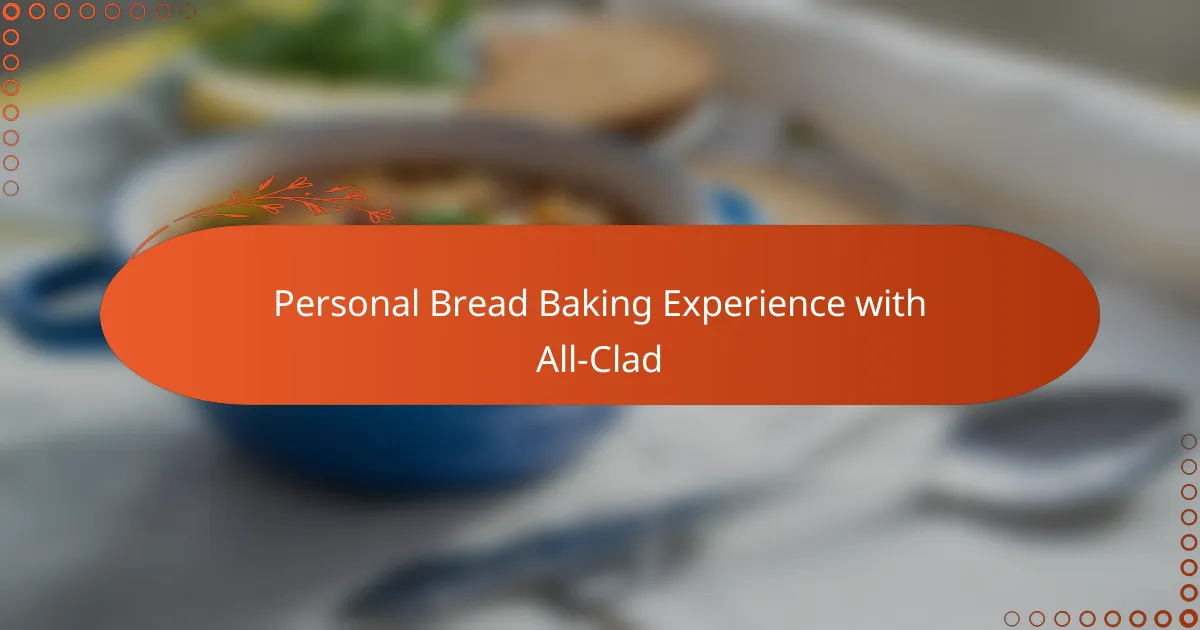
Personal Bread Baking Experience with All-Clad
Baking bread with All-Clad has genuinely transformed my approach in the kitchen. I remember the first time I slid my dough into my preheated All-Clad skillet—the even heat transfer immediately impressed me, and I could almost feel the bread baking uniformly beneath the surface. Hasn’t it felt frustrating before, when some parts of your loaf bake faster than others? With All-Clad, that worry just melts away.
What surprises me the most is how the sturdy weight and balanced feel of the pan give me a greater sense of control while shaping and transferring the dough. It’s almost like the cookware becomes an extension of my hands, making the whole process feel smoother and less stressful. Have you ever found a kitchen tool that just clicks with you? This skillet is that for me.
And here’s something I didn’t expect: the ease of cleanup. I once assumed that a high-quality pan meant more delicate care, but a quick soak and gentle wipe usually do the trick after baking bread. This simplicity actually encourages me to bake more often, turning it into a genuinely enjoyable habit rather than a chore. Don’t you find that less hassle in cleanup motivates you to cook more?

